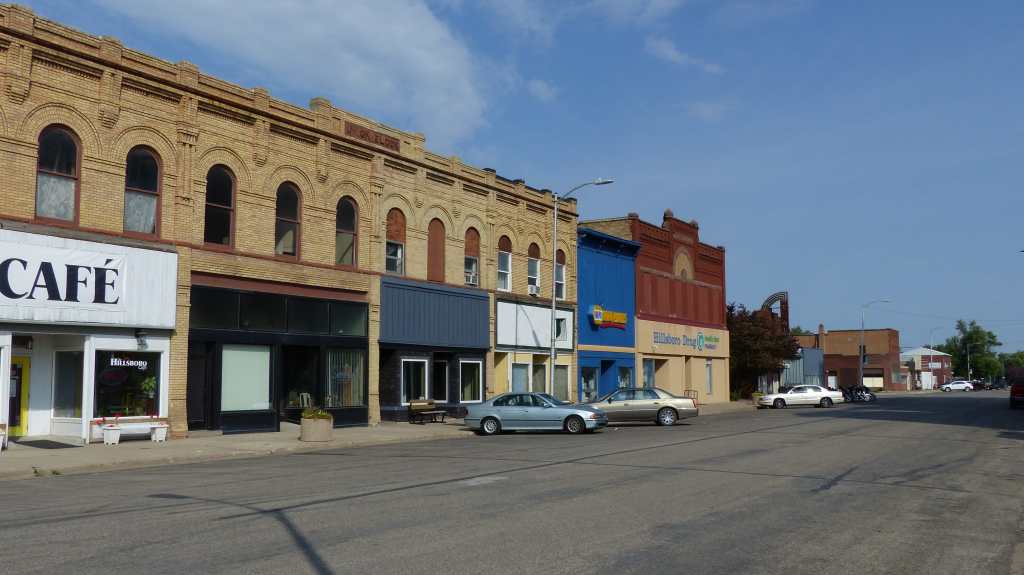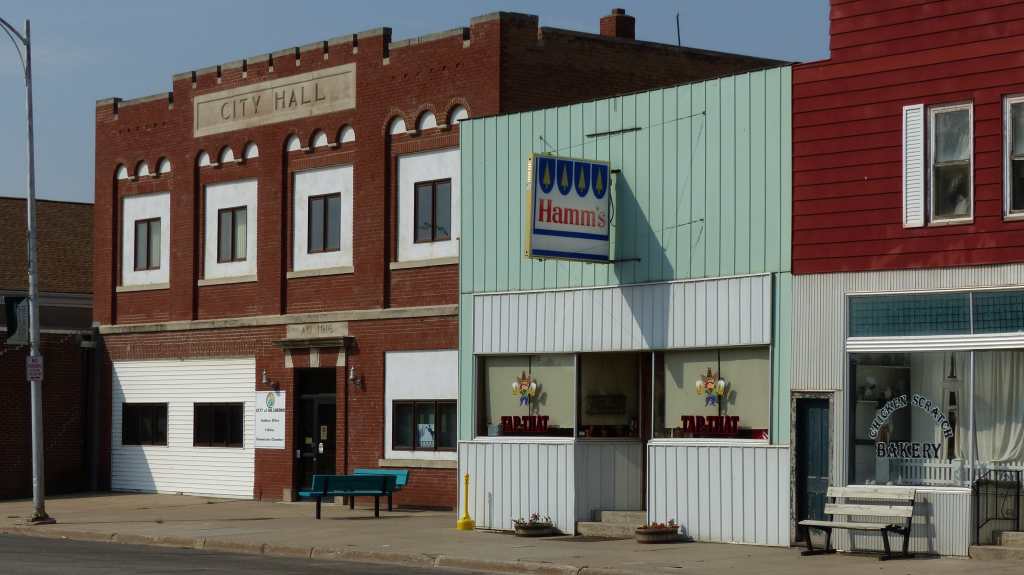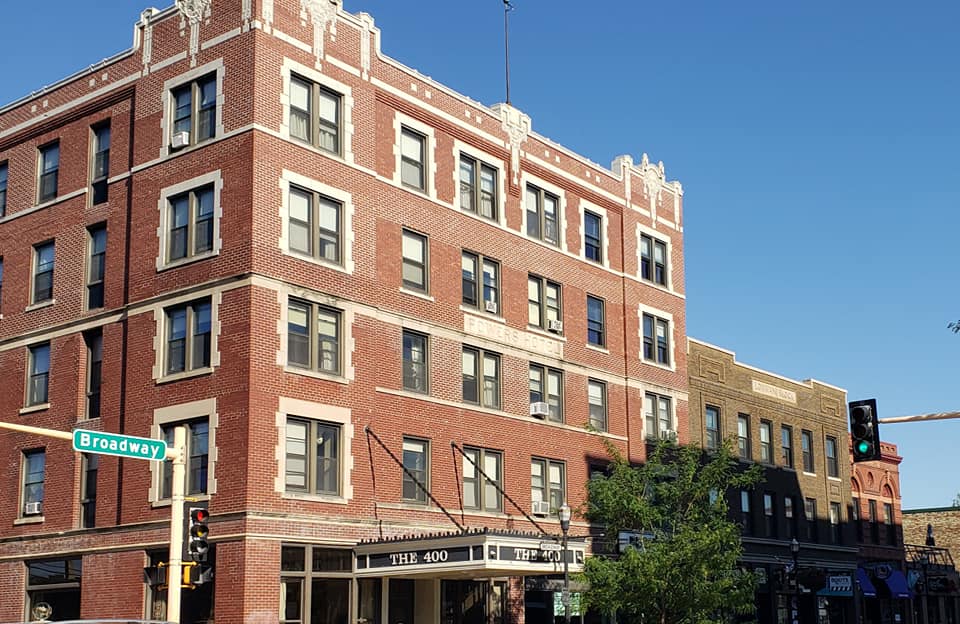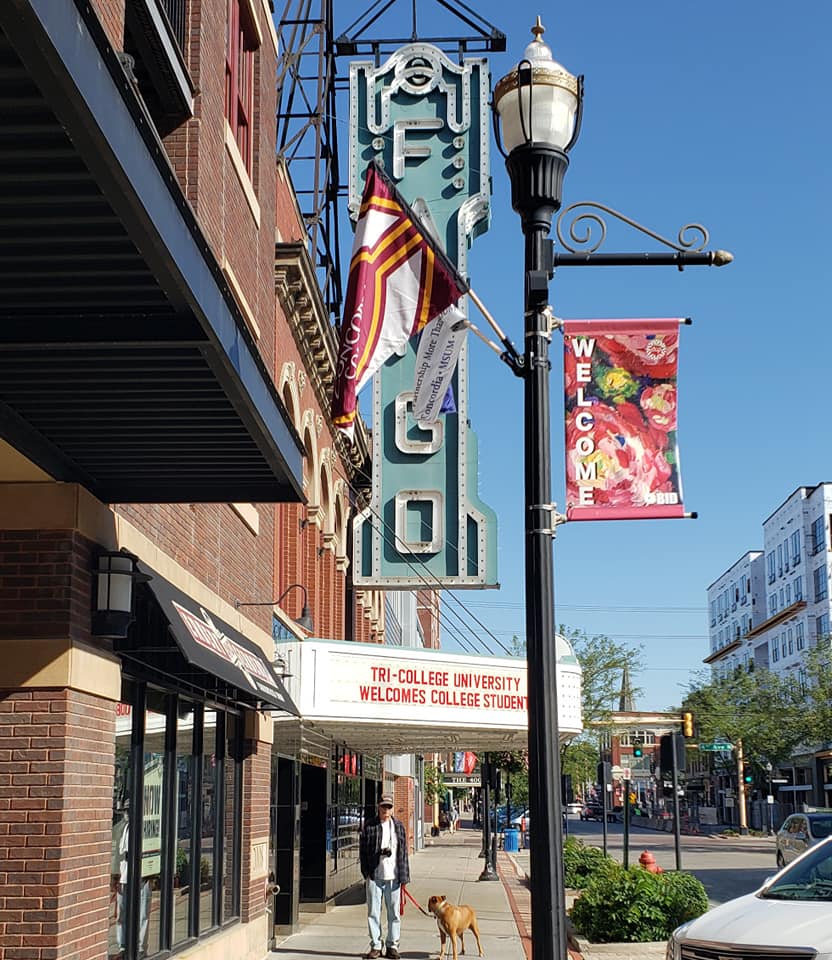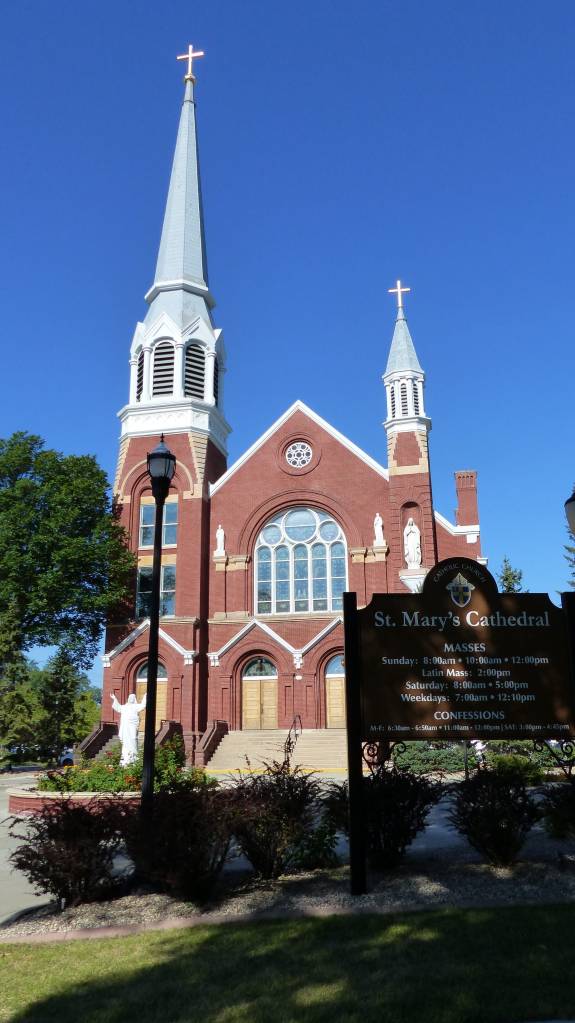
Sunday, August 21 through Tuesday, August 24, 2021
We pulled out of Red River State Park and headed south towards Fargo, ND, aka Bill’s Town. The weather is clear, we only have a hundred miles to travel and check in time is 4pm.

Curiosity gets the better of us so we stop in Hillsboro (1600 souls), the seat of Traill County. Hillsboro sits in the fertile Red River Valley. Local agriculture has dominated the area’s economy from the beginning. With its location on I-29, halfway between the two metropolitan centers of Grand Forks and Fargo/Moorhead, Hillsboro has seen steady population growth in recent years and has become somewhat of a bedroom community.

The area along the Goose River that is now Hillsboro was first settled by German and Norwegian settlers around 1870. In 1880, the present day site of Hillsboro was founded under the name “Comstock”. Local folklore tells of the residents of nearby Caledonia turning away a shabby surveyor because of his appearance. This man was then offered hospitality by residents in the tiny settlement of Comstock. The man turned out to be railroad baron James Hill.
Hill was so impressed by the kindness showed to him by the residents of this small community that he decided to place his Great Northern Railway there instead of in Caledonia. The name of Comstock was changed to “Hill City” in September 1880 in honor of Mr. Hill. The city was then renamed “Hillsboro” in 1881 after it was discovered that there was already a Hill City in South Dakota.

Fargo, 125,209 souls, is the seat of Cass County. Fargo is the most populous city in the state accounting for 16% of the state population. The Metropolitan Statistical area formed by Fargo, it’s twin city Moorhead, Minnesota and adjacent cities West Fargo ND and Dilworth MN have a population of approximately 249,000 folks.


Downtown Fargo, ND
Historically part of Sioux (Dakota) territory, the area that is present-day Fargo was an early stopping point for steamboats traversing the Red River during the 1870s and 1880s. The city was originally named “Centralia,” but was later renamed “Fargo” after Northern Pacific Railroad director and Wells Fargo Express Company founder William Fargo (1818–1881). The area started to flourish after the arrival of the Northern Pacific Railroad and the city became known as the “Gateway to the West.” During the 1880s, Fargo became the “divorce capital” of the Midwest because of lenient divorce laws.
A major fire struck the city on June 7, 1893, destroying 31 blocks of downtown Fargo, but the city was immediately rebuilt with new buildings made of brick, new streets, and a water system. More than 246 new buildings were built within one year. There were several rumors concerning the cause of the fire.


Excerpt from Wiki: The North Dakota Agricultural College was founded in 1890 as North Dakota‘s land-grant university, becoming first accredited by the North Central Association in 1915. In 1960, NDAC became known as North Dakota State University.
Since the 1990’s the Fargo-Moorhead area has consistently had one of the lowest unemployment rates in the US. Due to it’s low crime rate and supply of affordable housing Money magazine ranked the city near the top of America’s most livable cities.
Saint Mary’s Cathedral, Fargo
Temperatures can vary considerably in Fargo. Record temperatures range from -48* in January 1887 to 114* on July 6, 1936 with the coldest maximum temperature of -29*F. The area has a growing season of 144 days.

Moorhead (42,000 souls) is the largest city in northwest Minnesota. Fargo’s twin city was platted in 1871. People of Norwegian descent make up 36.1% of the population while folks of German descent comprise 36% and the Swedes at 7.6% are the three leaders of European ancestry. This makeup is fairly common in North Dakota and Minnesota. Moorhead is the Home of Minnesota State U.

Moorhead hosts the Hjemkomst Center. The name is pronounced YEM_komst, Norwegian for “Homecoming”. It’s a museum and events center. One exhibit that caught my attention is Ihdago Manipi, which means “They leave marks as they come through here”. As you might have surmised, “Ihdago Manipi explores the dramatic transformation that occurred in the early years of Clay County, Minnesota, including the arrival of railroads and immigrant families, the dispossession of indigenous people, an ecological revolution, and the construction of modern American life”.
The Moorhead Stave Church is located on the grounds. Stave churches were built in and around Scandinavia from the waning years of the Viking Age (11th – 12th century CE) to the beginning of the Early Modern Period (1500 CE). The technique of using vertical posts – or staves – to construct massive wooden buildings had been modified over time through several artistic and architectural waves and eventually became an iconic European art form. The Moorhead Stave Church is a full-scale replica of the Hopperstad Stave Church located in Vik, Norway.



While visiting the Fargo area we are staying at Buffalo River State Park located near the town of Glyndon MN (1400 souls). Glyndon was platted in 1872 when the railroad reached town. The park features trails through tall prairie grasses, a nice tree shaded campground and a really great sand bottom swimming pond located near the meandering Buffalo River. The swimming pond has been closed for two seasons, partly due to low water flows of the river and COVID concerns. It is a shame as one can only imagine great throngs of kids splashing around in that pond.


View across the prairie and our campsite at Buffalo River State Park
Wednesday we’ll meander down to Watertown, not New York, but South Dakota. See y’all there!
